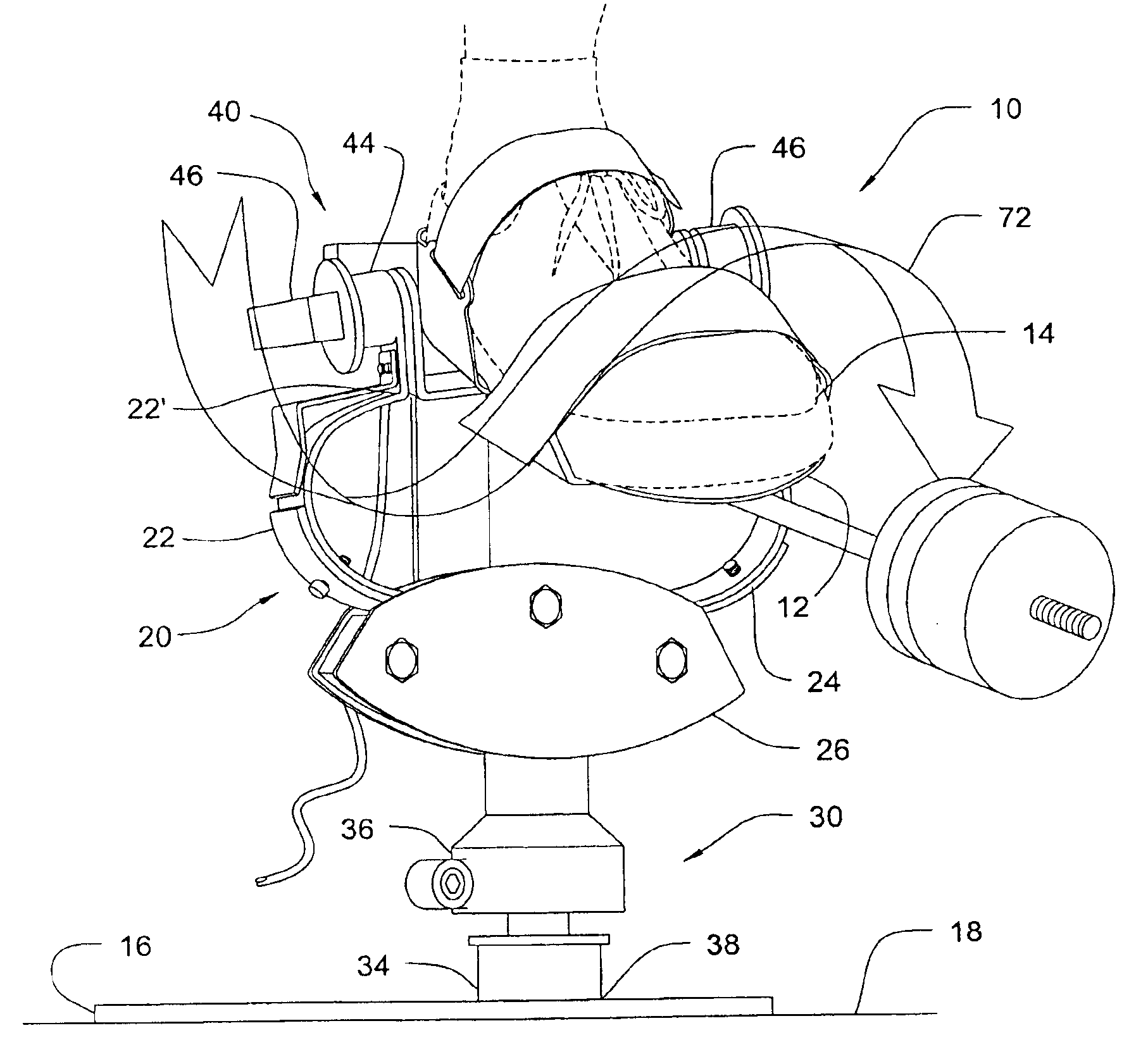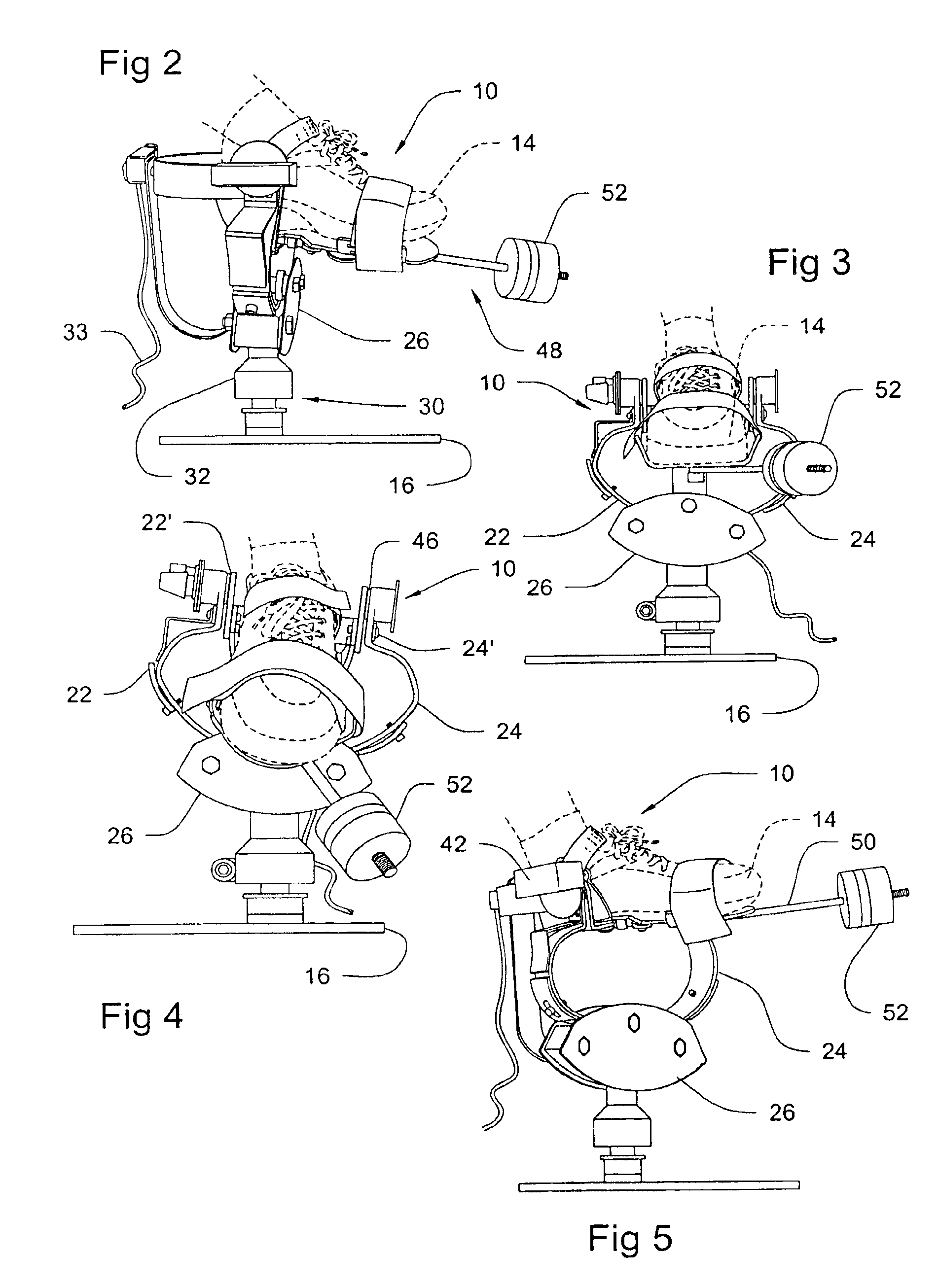This invention is directed towards an assembly structured to exercise predetermined portions of the user's body, including the leg, ankle and foot portions, as well as the joints,
muscle groupings and other parts of a person's body associated therewith. The structural and operative features of the exercise assembly of the present invention allow for the strengthening,
rehabilitation and / or general exercise of intended body portions, by directing the foot, ankle and lower leg through different motions or “paths of movement”, each of which has an at least partially different configuration, dependent on the specific area or part of the user's body on which the exercise is to be concentrated. More specifically, the paths of movement, set forth above, include but are not necessarily limited to the conventional orthogonal axis of rotation comprising the x axis, y axis and z axis. Further, the
range of movement of the platform is deliberately set to extend beyond the “normal”
range of movement of a particular joint in order that the joint or portion of the foot, ankle, leg, knee, etc. on which the exercise is concentrated, may be additionally expanded or a corresponding portion of the user's body may be additionally strengthened to increase his ability to perform functions or movements involved in ones activities, including sports, exercise, work, etc.
In at least one preferred embodiment of the present invention, motive force applied to the platform is accomplished by movements and forces applied to the platform by the user, rather than by any exterior motor or driver. In doing so the user places his or her foot on the platform and, dependent upon the joint or portion of the user's body to be exercised and / or strengthened, the user moves the platform through predetermined or prescribed path of movement which may include one or more of the aforementioned three axes of rotation.
Range of movement is also determined by the user. However, as set forth above, the
range of movement of the exercise assembly of the present invention is such that the user may force the one or more joints being exercised to be extended beyond the “normal” range or ranges of movement with the associated joint or joints in order to deliberately increase such range of movement for a given joint or joints and / or to additionally strengthen the joint. The various joints are thereby allowed to exceed what may be considered a
normal range of movement or endure
increased stress on a specific joint or portion of the user's body.
It should be further noted that in yet another embodiment of the present invention, at least one but preferably a plurality of individual drive motors, which may be electrically powered, may also be interconnected and define what may generally be termed as a driv a drive assOUMovement of the platform is thereby facilitated and controlled, with the users foot attached thereto, through a predetermined or prescribed path of movements, again dependent upon the portions of the users body intended to be exercised or strengthened. In such an embodiment three individual electric motors may be utilized, each motor being associated with the three orthogonal axes of rotation. A “universal”
range of motion through which the platform and the foot of user may pass is thereby facilitated. The three drive motors may further be structured to vary or more specifically extend the
range of motion of any or all of the joints or body portions associated with the knee, ankle, foot, etc.
Therefore, the exercise assembly of the present invention provides a versatile, reliable and precisely adjustable means of exercising the predetermined portions of an individual's body including the leg, ankle and foot portion, as well as the
muscle groupings, joints, etc. associated therewith. The strengthening
rehabilitation and / or general exercising of these predetermined portions of the user's body is thereby efficiently accomplished.
 Login to View More
Login to View More  Login to View More
Login to View More 


